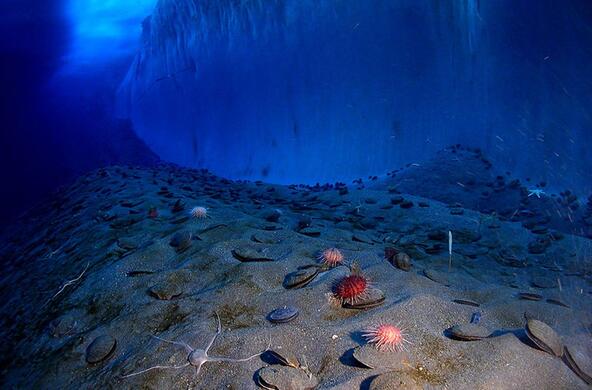Climate change is increasing the number and frequency of intense storms in the tropics. This means more lightning strikes, which can be bad for large trees, their neighbors, and ultimately the climate.
Cary Research Fellow and forest ecologist Evan Gora, who holds a dual appointment as an Earl S. Tupper Fellow at the Smithsonian Tropical Research Institute, is studying how climate change, lightning strikes, and tree death shape the composition of tropical forests and their ability to store carbon.
Gora says, “Tropical forests are the most important carbon sink on the planet; their trees hold 40% of the living carbon on Earth’s surface. Tree death is the dominant factor limiting carbon storage in these forests. Lightning is a major cause of tree death globally, but we know very little about what this means for tropical forest ecosystems, and how climate change might be intensifying lightning-caused tree mortality.”
When trees die and decompose, the carbon they store is released back into the atmosphere. Large trees, the main targets for lightning, emit about 7 tons of CO2 after an average strike. Plus, neighboring trees are damaged by ‘flashover’ – when electricity from a struck tree ‘jumps’ to nearby branches – releasing an additional 5.8 tons of CO2 per strike. If more trees die due to lightning strikes, tropical forests will store less carbon.
Using field surveys, drone imagery, and sensors that detect electromagnetic radiation, Gora and his colleagues are studying the effects of lightning strikes on tropical trees in Barro Colorado Island, Panama.

Gora says, “We know that tens of millions of lightning strikes hit tropical forests every year, but finescale monitoring is a challenge. The location of strikes is impossible to predict and they are hard to find after they occur. As a result, we have almost no information about the role of lightning in tropical forests.
We are using a network of sensors and cameras to help us detect strikes and locate struck trees so that we can study both immediate and long-term effects. So far, our findings indicate that lightning is a major driver of tree death and the release of forest carbon.”
Gora and his colleagues have located 93 lightning strikes and 2,195 lightning-damaged trees in Panama. They have found that on average, one lightning strike kills 5.3 trees, damages 18.3 trees, and affects an area larger than the size of a basketball court. Large trees are hit most frequently.
Despite clear trends linking lightning and tree death, Gora offers a note of hope: Lightning does not kill every tree it strikes. In cases when lightning is not fatal, the struck tree can actually benefit. This is because lightning kills parasitic plants and neighboring trees, reducing competition while increasing light availability.
Gora is now expanding this monitoring system to other forests and integrating with drones and satellites to study tree mortality holistically.
Gora explains, “More lightning could cause a shift in species composition that favors resistant species. We are working to unravel implications for carbon storage plus what this could mean for the forest ecosystem and organisms that depend on particular tree species to make a living. Understanding how lightning strikes affect tree mortality, tree species composition, and carbon cycling will be critical to predicting tropical forest response to climate change, and consequences for global carbon sequestration.”





